Exhibition

Satoshi Uchiumi: Square and Round Vessel
2012 Oct. 5 (Fri) - Oct. 21 (Sun)
Art Front Gallery will present "Square and Round Vessel", solo exhibition of Satoshi Uchiumi.
| Date | 2012 Oct. 5 (Fri) - Oct. 21 (Sun) |
|---|---|
| Hours | 11.00 - 19.00 (closed on Mondays) |
| Venue: | Art Front Gallery (All installation spaces will be opened from Oct. 10) |
| Event | Reception:Oct. 12 (Fri) 18:00 - 20:00 |
| Artist appears at the gallery : | Oct. 12(fri), PM |
Satoshi Uchiumi has been involved in many exhibitions such as “MOT Annual” in 2004 and “Roof Gardens” in 2008, both at Museum of Contemporary Art Tokyo. What I could see from his works is that this artist takes a strong interest in how and what kind of work should be arranged in the space, not merely working on a painting in a square shaped canvas format. It is somehow unique to have this attitude toward a work among two dimensional artists. The exhibition title “Square and Round Vessel” comes from the word “Water conforms to the vessel”. Following this word, the exhibition title tells Uchiumi would like to create a painting that is changeable and flexible just like water depending on a place to be exhibited.
For most people, paintings are a media that has various restrictions especially on shapes and materials. I can say that this understanding based on its comparison with installations, but the restrictions in paintings are actually not very strict comparing with other media such as stone carving and ceramic art, even though various materials are now being used in three dimensional works. Like Fresco paintings of the Renaissance period in Italy and Sliding Door Panels of the Momoyama period in Japan, paintings are created to fit them into existing architectural space. There was a period when works were closely related with spaces, but the invention of canvas, movable media to support the paint, freed painting from its restriction bounded by space. In modern times, subjects in paintings became broader, such as a landscape painting and a still life by near civic patrons who support arts and the change of social conditions. In addition, investing of tube paints broadened the work place to paint and working hours to create one work.A development of acrylic paints in recent time must also be enhanced the possibilities in paintings. Rauschenberg’s combine paintings in ‘60s and Frank Stella’s modified canvases brought a great change in a concept that a painting should have a square form. As more possibilities painting gained, paintings founded their suitable sites in galleries and museums. In spite of this condition, paintings bonded to a specific space seem to be still attractive for many artists including Matisse and Chagall. What does this suggest?
Three dimensional works built up a new possibility. Using various materials in a space under broad themes, installation made possible to invite audience to experience its own created space. Three dimensional works opened its way to create a space. On the other hand, looking back to paintings, panoramic paintings became popular in Europe in 19th century. Unless filling up a space systematically by series of works such as Water-Lilies by Monet at Orangerie Museum and Sol Lewitt’s works in recent period, it is difficult to create a space by paintings and taking viewers into the space. While concerning fine composition in a painting, some artists have no consideration their painting’s arrangement in a space. This could tell that paintings are treated as individual works like a window on a portable wall, and this leads a lack of the location as for a painting in given space. Artists emphasized having the values of paintings being satisfied in a square shaped flat substance, rather than creating a painting in a relation to the society. This situation, which has a lack of sociality and nowhere-ness in paintings, may cause a risk of missing the reason for painting to exist taking a part in living society. In other words, restrictions of paintings may be created systematically by art education that is teaching children to paint an object on a paper as introduction of art, most of receivers who got used to the art education and misunderstands that paintings have to be two dimensional works, and the artists who have been supporting the system as suppliers. I wonder whether there are two dimensional works that gain prior freedom than advertisement billboards in our contemporary life when street corners and private spaces are full of visual stimulations.
What about Uchiumi’s works which is to create works filling up the “Square and Round Vessel”? As far as I see his works, he is neither trying to make works coexisting with the given space like the Renaissance artists, nor to make work act also as decorations like large windows filling in a space like sliding door panels of the Momoyama period. His works sometimes change the given space, and sometimes make the space even more interesting for viewers. Thus, Uchiumi’s works started from his starting point with an assumption that paintings are two dimensional works which have already gained freedom. He requires works as objects which cannot sometimes describe as two dimensional works, and rule the space. The works are existences that have a power to create a space rather than merely coexist within a space. In this exhibition, Uchiumi presents installations with unique two dimensional works in two gallery spaces. Neither coexisting with the spaces, nor being opposing the spaces, it is interesting to see how “Square and Round Vessel” space receive Uchiumi’s installation.
Toshio Kondo, Art Front Gallery
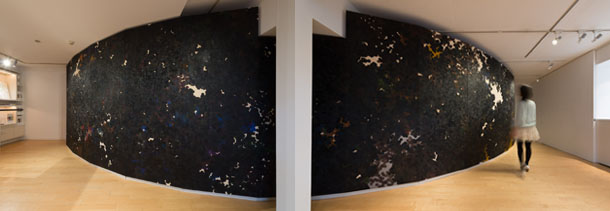
For most people, paintings are a media that has various restrictions especially on shapes and materials. I can say that this understanding based on its comparison with installations, but the restrictions in paintings are actually not very strict comparing with other media such as stone carving and ceramic art, even though various materials are now being used in three dimensional works. Like Fresco paintings of the Renaissance period in Italy and Sliding Door Panels of the Momoyama period in Japan, paintings are created to fit them into existing architectural space. There was a period when works were closely related with spaces, but the invention of canvas, movable media to support the paint, freed painting from its restriction bounded by space. In modern times, subjects in paintings became broader, such as a landscape painting and a still life by near civic patrons who support arts and the change of social conditions. In addition, investing of tube paints broadened the work place to paint and working hours to create one work.A development of acrylic paints in recent time must also be enhanced the possibilities in paintings. Rauschenberg’s combine paintings in ‘60s and Frank Stella’s modified canvases brought a great change in a concept that a painting should have a square form. As more possibilities painting gained, paintings founded their suitable sites in galleries and museums. In spite of this condition, paintings bonded to a specific space seem to be still attractive for many artists including Matisse and Chagall. What does this suggest?
Three dimensional works built up a new possibility. Using various materials in a space under broad themes, installation made possible to invite audience to experience its own created space. Three dimensional works opened its way to create a space. On the other hand, looking back to paintings, panoramic paintings became popular in Europe in 19th century. Unless filling up a space systematically by series of works such as Water-Lilies by Monet at Orangerie Museum and Sol Lewitt’s works in recent period, it is difficult to create a space by paintings and taking viewers into the space. While concerning fine composition in a painting, some artists have no consideration their painting’s arrangement in a space. This could tell that paintings are treated as individual works like a window on a portable wall, and this leads a lack of the location as for a painting in given space. Artists emphasized having the values of paintings being satisfied in a square shaped flat substance, rather than creating a painting in a relation to the society. This situation, which has a lack of sociality and nowhere-ness in paintings, may cause a risk of missing the reason for painting to exist taking a part in living society. In other words, restrictions of paintings may be created systematically by art education that is teaching children to paint an object on a paper as introduction of art, most of receivers who got used to the art education and misunderstands that paintings have to be two dimensional works, and the artists who have been supporting the system as suppliers. I wonder whether there are two dimensional works that gain prior freedom than advertisement billboards in our contemporary life when street corners and private spaces are full of visual stimulations.
What about Uchiumi’s works which is to create works filling up the “Square and Round Vessel”? As far as I see his works, he is neither trying to make works coexisting with the given space like the Renaissance artists, nor to make work act also as decorations like large windows filling in a space like sliding door panels of the Momoyama period. His works sometimes change the given space, and sometimes make the space even more interesting for viewers. Thus, Uchiumi’s works started from his starting point with an assumption that paintings are two dimensional works which have already gained freedom. He requires works as objects which cannot sometimes describe as two dimensional works, and rule the space. The works are existences that have a power to create a space rather than merely coexist within a space. In this exhibition, Uchiumi presents installations with unique two dimensional works in two gallery spaces. Neither coexisting with the spaces, nor being opposing the spaces, it is interesting to see how “Square and Round Vessel” space receive Uchiumi’s installation.
Toshio Kondo, Art Front Gallery

exhibition view of "Square and Round Vessel", (installation work "All is Vanity") photo by Ken Kato
Artists
Related News


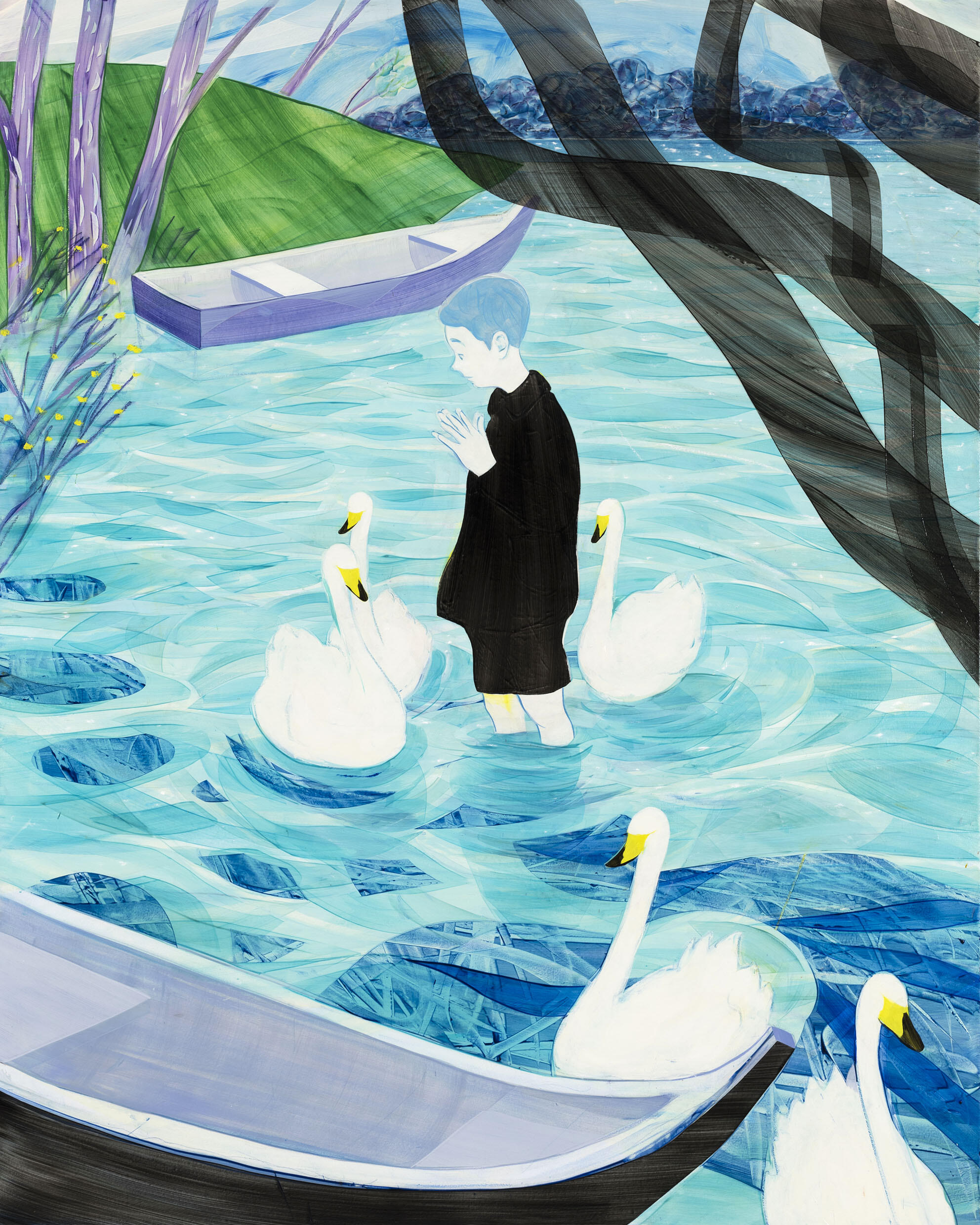
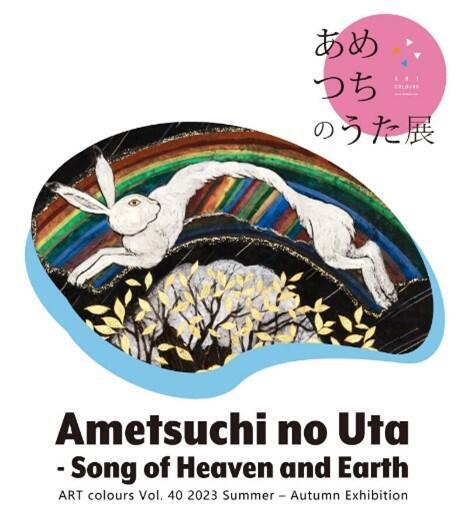


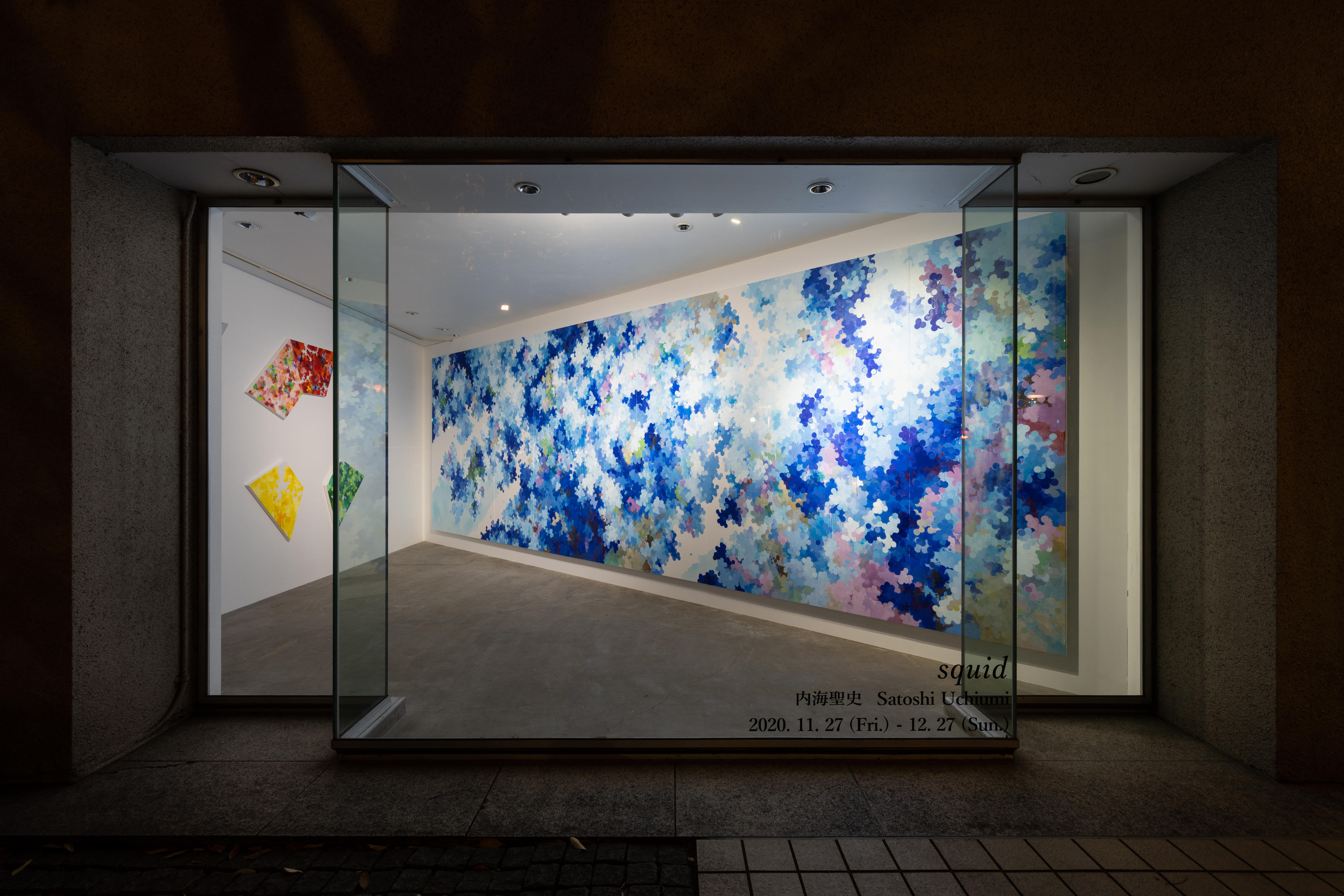
![[Interview] Satoshi Uchiumi : squid](https://artfrontgallery.com/whatsnew/assets_c/2020/12/c3288dadc97c15f895a16b0a1d9371269c5da127-thumb-2480x1654-8334.jpg)





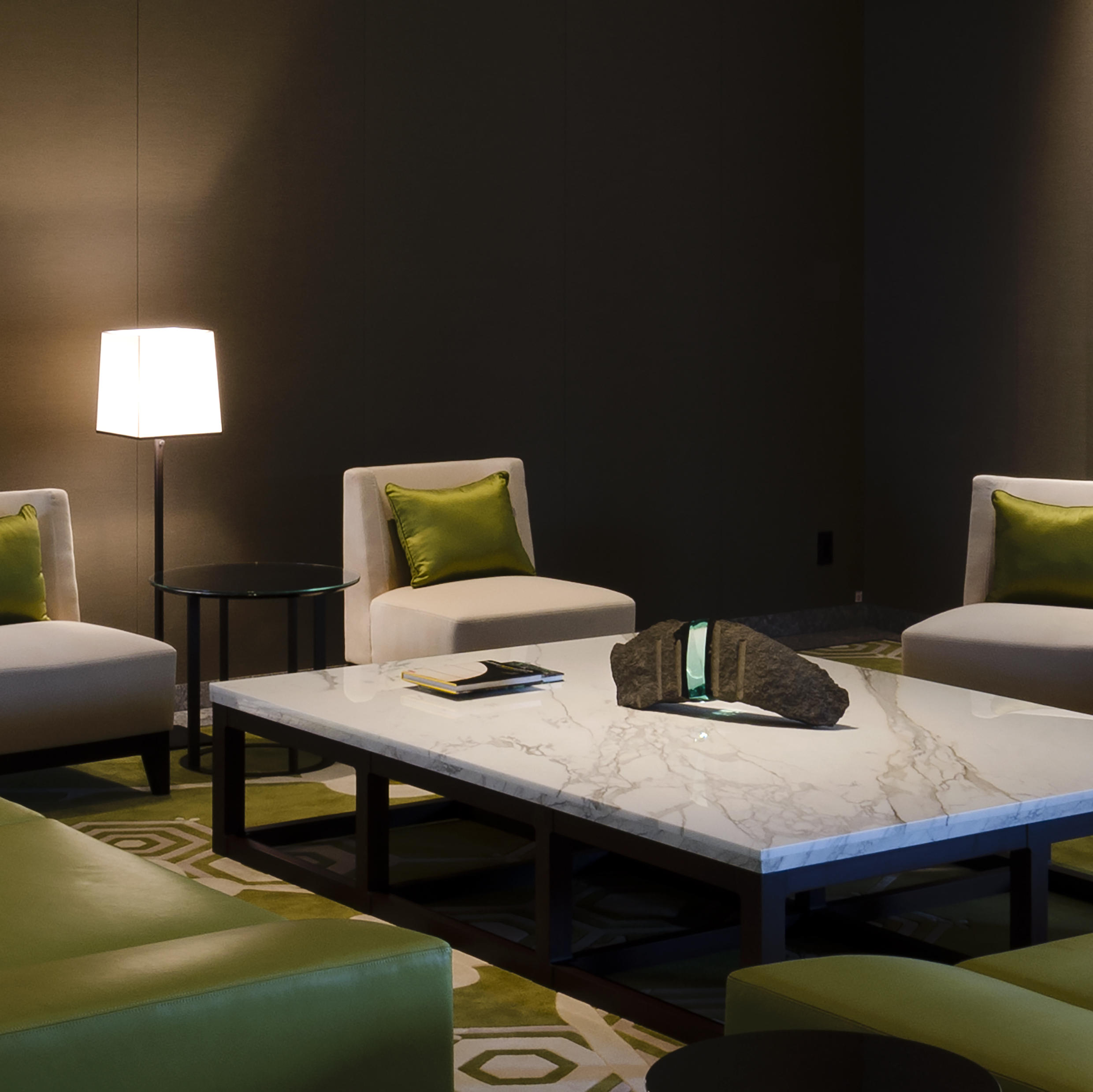
![[Interview] Satoshi Uchiumi : squid](https://artfrontgallery.com/project/img/000.jpg)



